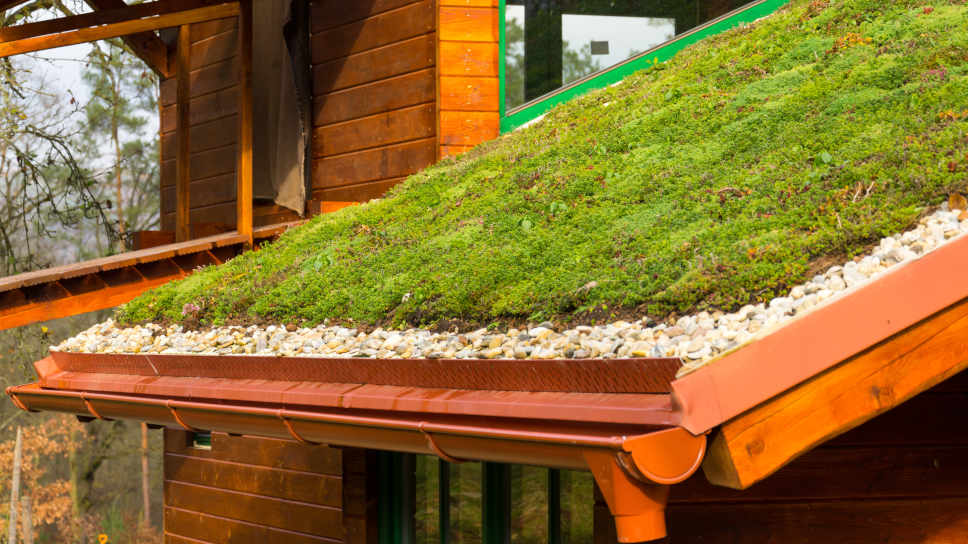What is an extensive green roof?
A green roof has the same function as a conventional roof. Its primary task is to protect buildings against weather conditions: precipitation and temperature changes. A roof structure secured with a thermal-insulation layer made of, e.g., PUR foam, can be covered with grass, sedum, herbs, flowers, or other plants. Then we call it a green roof.
Is every roof suitable? Generally, there are no contra-indications that such a solution can be excluded for some types of roof. However, flat roofs are more often covered with plants. The built-structure height is also non-significant for the implementation of such a solution. A building with a green roof has many advantages, especially in towns where more and more green spaces are being handed over for, e.g., the development of a block of flats.
Such a solution facilitates an interesting arrangement. An extensive roof can serve as, e.g., an observation deck. In addition to its aesthetic features, it brings functional benefits in the form of the absorption of dust and dirt by plants, as well as water circulation. When choosing plants with low vegetative requirements, we call it an extensive roof.
The green roof — layers and design
A green roof has to meet certain conditions in order to bring benefits. It must be insulated and durable; that is why particular focus should be put on thermal and damp insulation. An extensive roof is made of a structure on which an insulation material and a covering of plants with low requirements are placed. It is worth remembering that this place is exposed to extreme weather conditions.
What features should green-roof insulation have? First of all, it should be lightweight, and as adherent to the structure as possible. An incorrectly selected insulation can contribute to the formation of fungus, and interfere with the structure, and eventually even contribute to the building’s degradation. The plant covering itself functions as a protection for the insulation layer.
The layers of a green roof include filtration, drainage, and protective parts. Plants planted on the roof can also contribute to the soundproofing of acoustic waves.

Green-roof insulation — which thermal insulation material is the best?
Is a green roof an ecological structure generating an increasing oxygen amount in the environment? Definitely yes. What’s more, green plants on the roof can prevent the structure’s heating. It is related to their physico-chemical properties and applied roof insulation. What materials are suitable? PUR foam is popular with this type of roof.
That is because of its physical properties. Spray foam is flexible. It fits easily into even the smallest gaps, leaving no thermal bridges. It is also lightweight and perfectly combines with various types of materials. PUR foam is easy to apply, but it is worth remembering that the roof surface must be dry. Polyurethane foam is an insulation material. It also has waterproofing properties, but does not constitute a typical waterproofing membrane itself. Only the correct application allows the foam to maintain its durability, flexibility, and proper functions. It is also safe for people with allergies. Green roofs are a new quality in construction.

 This website uses cookies. By using this website, you consent to the use of cookies in accordance with your browser settings.
This website uses cookies. By using this website, you consent to the use of cookies in accordance with your browser settings.